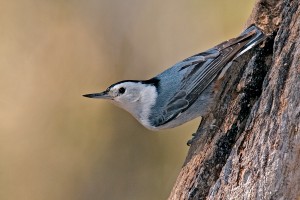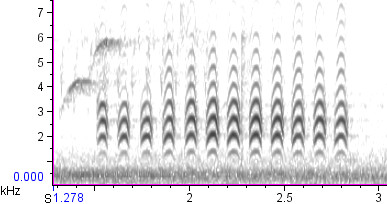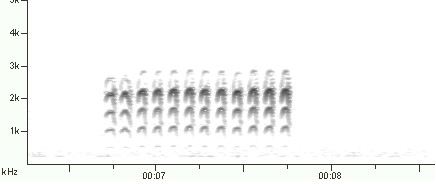White-breasted Nuthatch, Part Two

Last time we looked at the most common calls of the three populations of White-breasted Nuthatch. Here in Colorado, we have both the “Rocky Mountain” and “Eastern” forms of the White-breasted Nuthatch, and I’ve heard a couple of people proclaim that any bird giving a rapid-fire series of calls is a Rocky Mountain individual, while any bird giving a single “yank” note is an Eastern. Unfortunately, it’s more complicated than that. All three populations of the species give rapid series of calls from time to time, so the first thing you’ve got to figure out is which type of call you’re listening to.
Since White-breasted Nuthatches have a lot of different call types, it will probably require several posts to discuss them all. Over the course of this series we’ll mostly follow the terminology of Ritchison (1983) in our discussion of “fast songs,” “slow songs,” “rapid quanks,” and “hit-trills.” Today’s installment looks at the “fast songs.”
Fast songs
Ritchison distinguished between “slow songs” (which we’ll explore in a later post) and “fast songs.” Fast songs consist of rapid strings of simple overslurred nasal notes at a rate of about 10 notes/second, and they appear to be similar in all populations of the White-breasted Nuthatch:



(click here to listen to the above recording at the Macaulay Library)
The length, rate and pitch of fast songs are fairly variable within groups, as far as I can tell, but there appears to be a general trend of increasing pitch as you move from east to west. With more investigation, these differences may turn out to be systematic.
How can you tell when you’re hearing a fast song as opposed to some other vocalization? Two ways:
- Rhythm. Fast songs contain long strings of single notes (not double notes like in the “disyllabic quank” call of Rocky Mountain birds) in strict rhythm (not accelerating or decelerating).
- Behavioral context. According to BNA, fast songs are given by males hoping to attract a mate; they are often sung loudly many times in a row in late winter and spring. This behavioral context helps differentiate them from some of the “rapid quanks” we will see next, since the two types of vocalizations seem to integrade.
The take-home lesson: long strict series of single nasal notes don’t necessarily identify a bird as a member of the “Rocky Mountain” group. Double notes in series, though, are a good indicator — see the last post for an example.
More on nuthatches to come. Stay tuned.